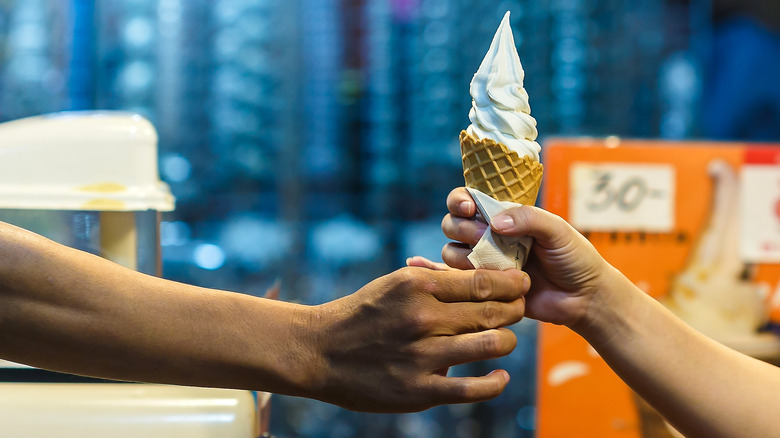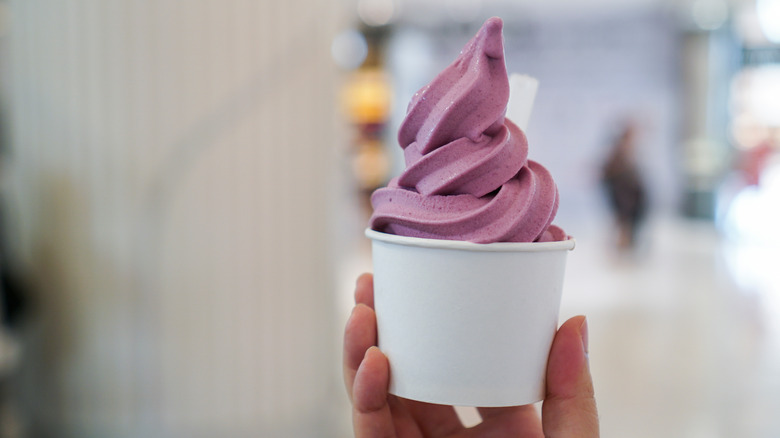The Difference Between Soft Serve And Ice Cream Comes Down To Air
One of the best treats in life may be ice cream. There are several reasons why this cold, sweet treat is such a popular dessert around the world. For starters, there are countless flavors and toppings available, from classics, like vanilla and chocolate, to more unique options, like matcha green tea and black sesame. Ice cream is also widely available in many grocery stores, ice cream shops, and restaurants, making it an easy and convenient dessert option.
In addition, eating ice cream is a great way to cool down on a hot day or after a spicy meal, which is why any ice cream shop may be especially popular during the summer months. Plus, many people associate the sweet treat with positive memories from childhood, such as trips to the ice cream truck, hanging out at ice cream parlors, or eating ice cream cones with family and friends on hot summer days. But which do you prefer — ice cream or soft serve? And do you know the difference?
The science behind soft serve
Soft serve and ice cream are both frozen desserts, but there are a few key differences between them. Overall, the main difference between soft serve and ice cream is the texture and fat content. Soft serve is lighter and creamier, with a lower fat content, while ice cream is richer and denser, with a higher fat content. The reason behind this is how the two are made, stored, and served.
According to Smithsonian Magazine, soft serve is regular ice cream that is served at a different point in the creation process. Soft serve is made by churning air into the ice cream mixture as it freezes, giving it a lighter and creamier texture compared to traditional ice cream. The American Chemical Society says that ice cream is between 30% and 50% air, but soft serve is at least 50% percent air, most often higher. Soft serve is most often served directly from the machine that helps to make it, which means it stays creamy, but ice cream is usually scooped into a cone or bowl after it has frozen, making it firmer in texture.
The other differences in soft serve and ice cream
There are more differences in soft serve and ice cream and how they are made. Soft serve, for example, has a lower fat content than ice cream because it is made with milk, while ice cream is made with cream, which has a higher fat content. However, ice cream is actually lower in calories, according to FatSecret. One cup of soft serve has about 384 calories, while one cup of ice cream has about 267 calories.
Aside from how they are served, soft serve and ice cream are also stored and then served at different temperatures. Soft serve is served at a slightly higher temperature than ice cream, which gives soft serve its smooth, creamy, light, and airy texture. Of course, the texture of soft serve can vary depending on the recipe, ingredients, and the equipment used to make it, but overall, the texture of soft serve ice cream is lighter and softer than traditional ice cream, which is stored at lower temperatures to give it a firmer texture.


